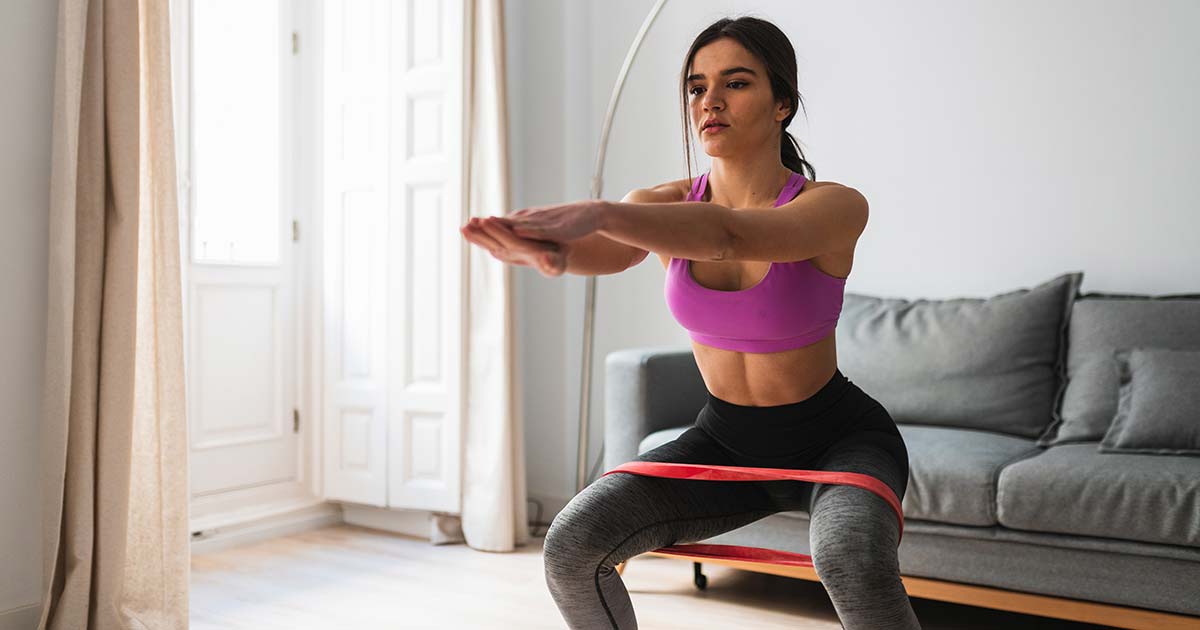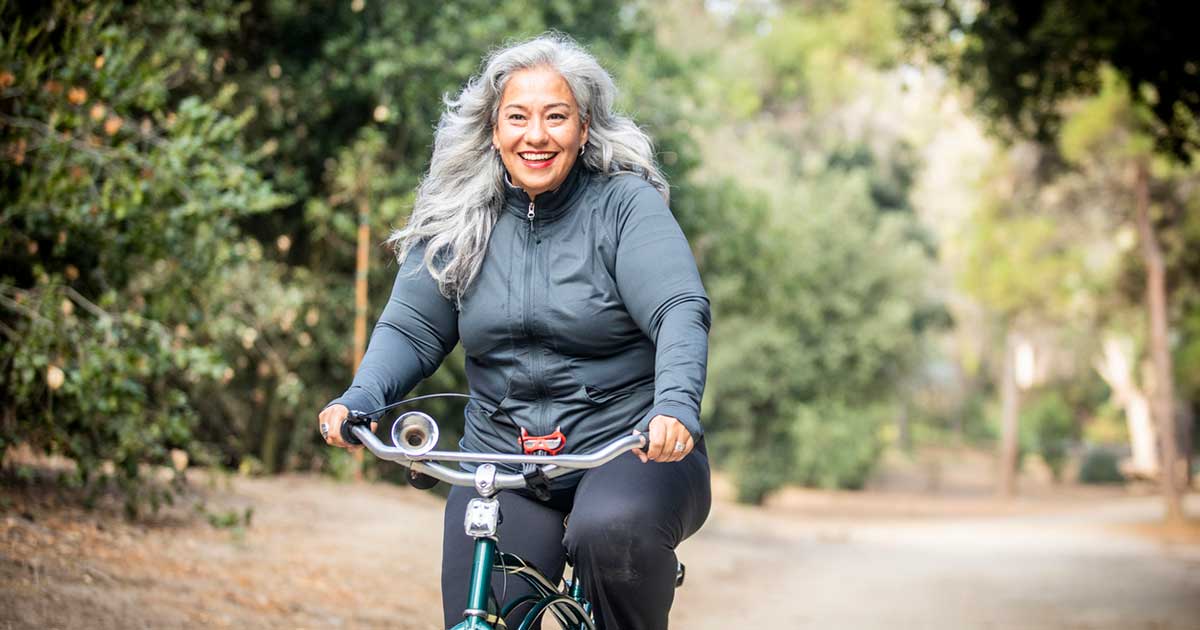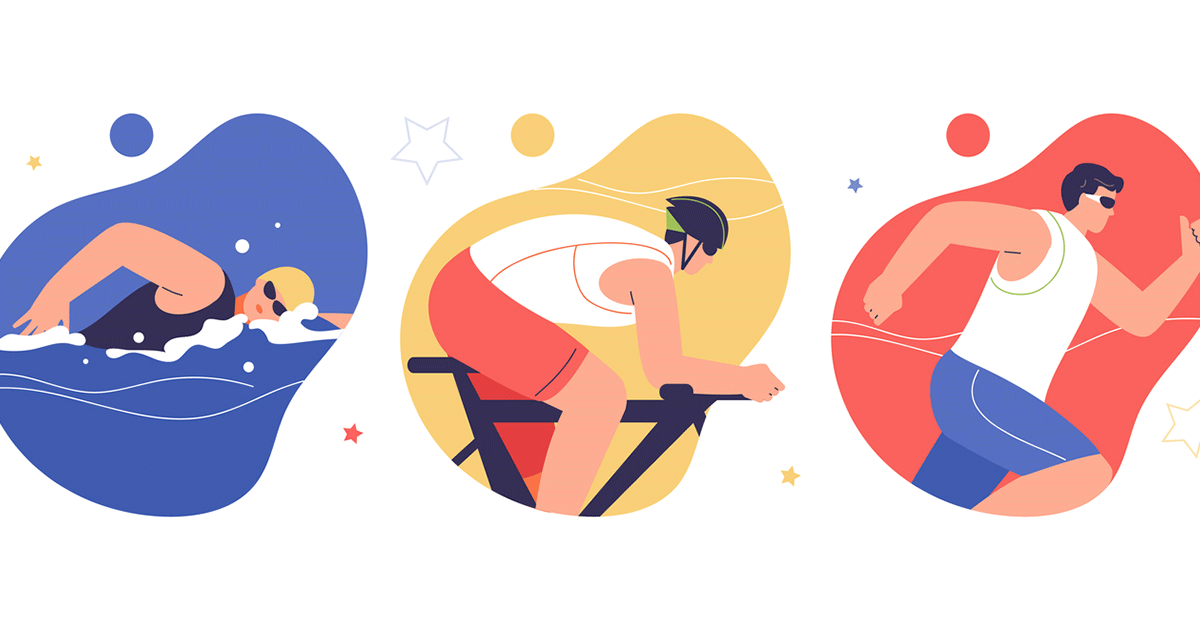
Advice to improve your movement, fitness, and overall health from the #1 in orthopedics in the U.S.
How to Set Up an Exercise (or Spin) Bike Properly
Into indoor cycling? Here’s a step-by-step guide to proper bike setup for newbies and experienced riders alike.
Advice to improve your movement, fitness, and overall health from the #1 in orthopedics in the U.S.
Whether you're brand-new to the indoor cycling game or have been at it a while, it's never a bad idea to assess your bike setup. Fit is very individual, says Aaron Karp, MS, ATC, CSC, an exercise physiologist at the Tisch Sports Rehabilitation and Performance Center and HSS Brooklyn. "Any guidelines for stationary bike setup are general," he adds. "Different people will have different needs, so you really need to try out what works for you."
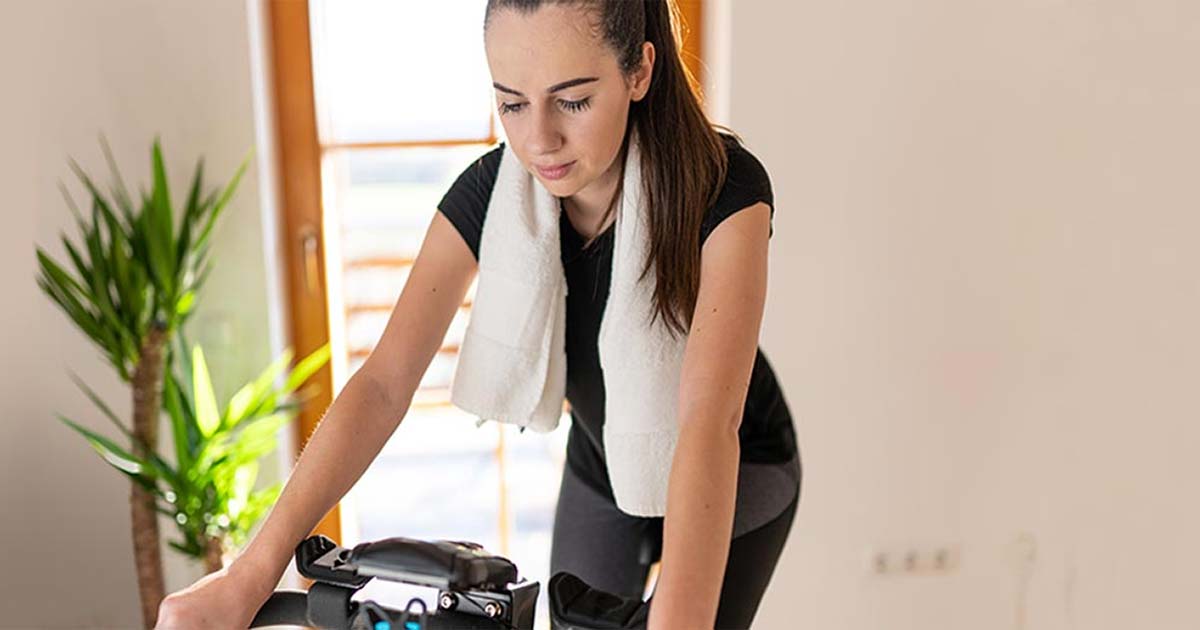
Even if you feel more comfortable on your Peloton than you do on your couch, you can probably still make small changes to help you prevent injury and maintain proper form when riding.
Seat Height
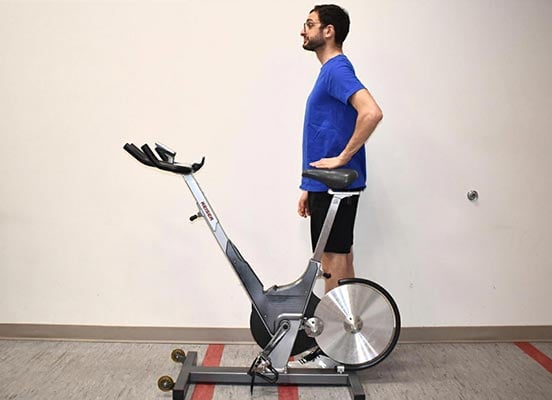
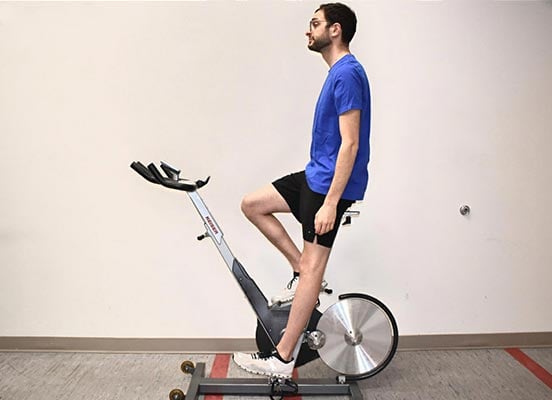
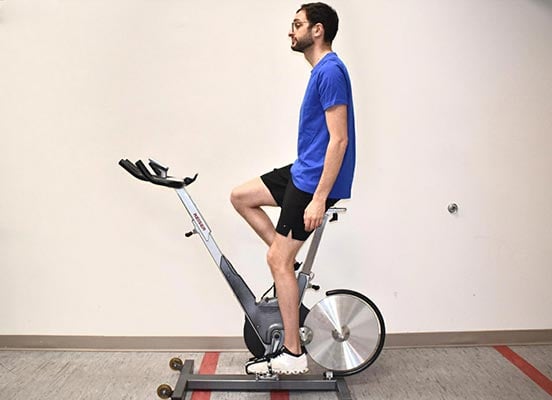
With your feet flat on the ground, stand next to your bike and adjust the seat so that it's about even with your hipbone. "Put your hands where you would consider your hips are—you'll feel a rounded-off bone that goes all the way from front to back," Karp says. That's your iliac crest. "The seat should be more or less even with that. But most people need to make a few more adjustments from here."
Next, climb onto the bike, but don't clip your feet into the pedals or put them in the cages right away. With your heel at the front of the pedal, push all the way down on one side, so your foot rests roughly at 6 o'clock. "Your knee should be perfectly straight," says Karp, "so that when you slide your feet into the cages or clip into the pedals, you'll have the right amount of bend in your knee."
That bend should be very subtle—about 5 to 10 degrees. "It shouldn't be locked out, just bending noticeably," Karp adds.
A good sign that you've gotten it right is that when you take your feet off the pedals, the toe of your foot touches the floor. Any more means you're sitting too low, and if it doesn't touch at all, you're too high. Both a too-low and a too-high seat can set you up for knee pain.
Seat Distance
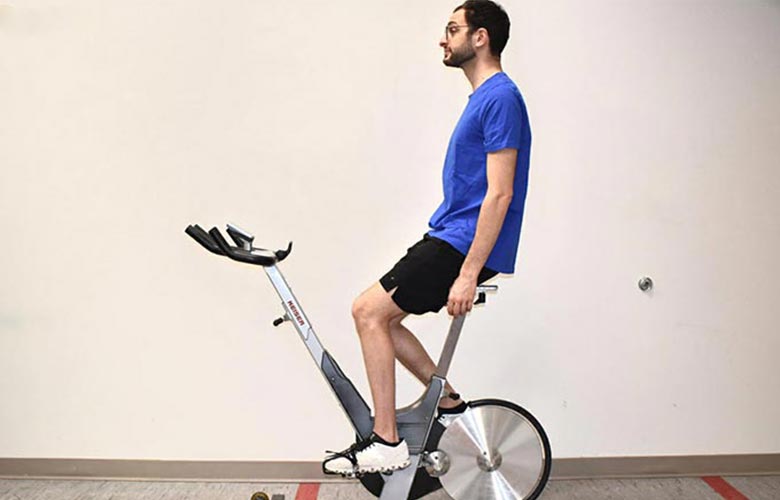
Once you've gotten to a comfortable height, next is to move the seat forward or backward, toward or away from the handlebars. Sitting on the bike, clip in or put your feet in the cages and bring your legs to 9 o'clock and 3 o'clock. (It doesn't matter which leg is in front.)
"What you want to do is imagine there's a straight line from your front knee right down to the middle of the pedal, which should be right in line with the ball of your foot," Karp says. If you clip in, this may require adjusting where your clips are on your shoes. Don't worry about the leg in back, unless you want to double-check—the bend should be the same on both sides.
If your seat is too far forward or backward, "you could be putting unnecessary stress on your joints, as well as limiting the use of muscles you should be using, like your glutes," Karp says. "Your glutes are important for maintaining alignment of your knee, which reduces risk of injury, while also increasing your performance."
Handlebar Height
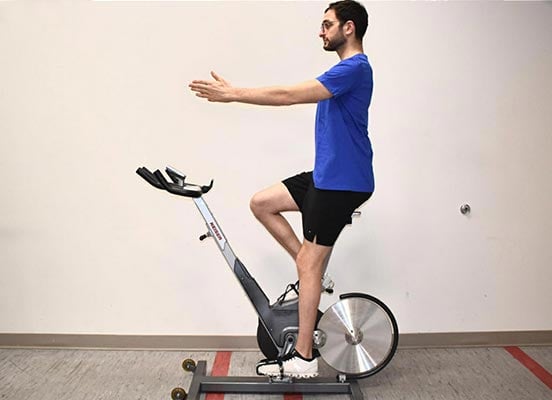
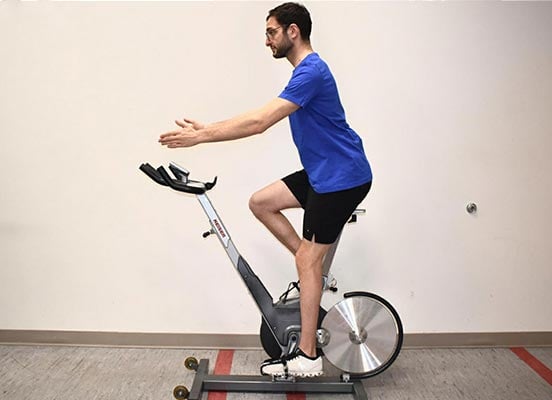
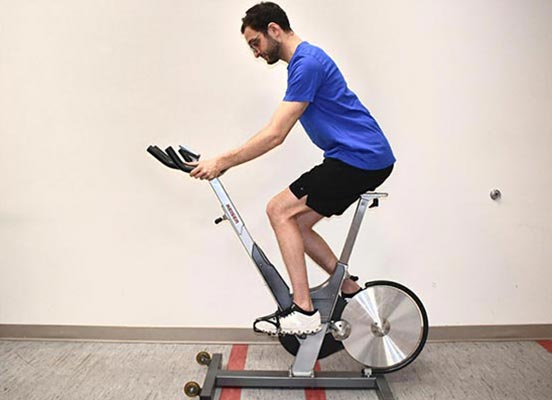
"When it comes to the handlebars, the simple answer is whatever feels comfortable," says Karp. "You don't want to feel like you're either overreaching or too bunched up." Your elbows should be slightly bent and your shoulders away from your ears as much as possible.
Karp has this helpful trick to figure out the right handlebar height: Sit up straight, extend your arms straight out in front of you so they're parallel to the ground, then hinge forward slightly with your spine neutral. Your handlebars should be at a height that is comfortable for you while allowing you to keep your spine in that neutral position. If your back starts to round, your handlebars are too low.
"What's really good about adjusting the handlebars that way is that it works for everyone," says Karp. "If you don't have very mobile hamstrings or hips or a strong core, you naturally won't go as low as someone who does. It's a very self-regulating technique that teaches you how to keep your core strong while riding."
If you start rounding your back, slouching or feeling too much weight in your shoulders, repeat the technique again.
Body Positioning
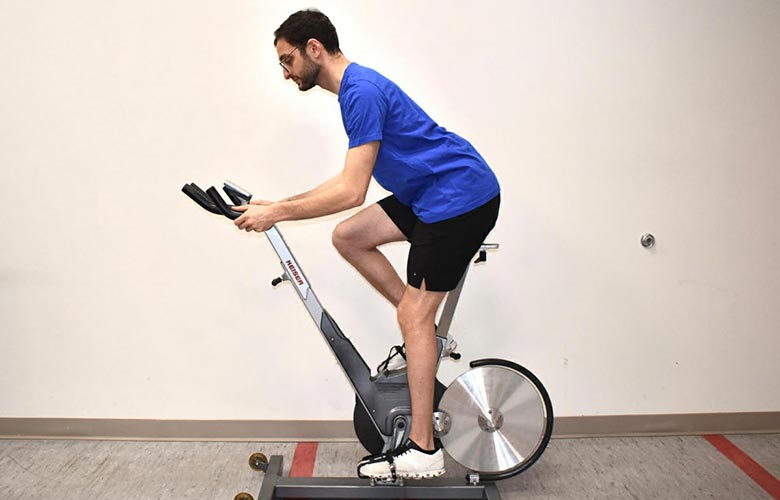
As general rule of thumb, Karp says, as long as your spine is relatively straight, your core is engaged when you're riding, and you have a slight bend in your elbows without too much weight in your shoulders, you're in a good position. "You also want your knees to be tracking over the middle of your feet," he adds.
Once you've adjusted the bike so it fits you properly, then look at the screen. For bikes like Peloton or SoulCycle with screens attached, "if you look at the screen the entire time, you're at risk of hyperextending your neck," Karp says. Try to listen to the instructor more than look. That also goes for if you're watching your class on a TV you can't reposition.
If you're using a bike without a screen and taking a class on a laptop or another device you can more easily move, "try to put it on a coffee table or something a little bit lower than the bike so that you're able to look down," he adds.
Published 12/21/2020

